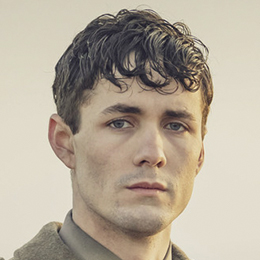Episode 1 History & Images
Learn more about the events, historical figures, and movements of the time period covered in World on Fire Episode 1, from the Blackshirts in Britain to the Polish defenders in Danzig. How and why did the Nazis come to invade Poland and begin World War II, and when did the British get involved? Find out, and learn about Oswald Mosley, conscientious objectors, and the astonishing, true story that was mirrored by Helen Hunt’s character, Nancy Campbell, in Episode 1!
- 1.
EVENT: Attack on the Polish Post Office in Danzig

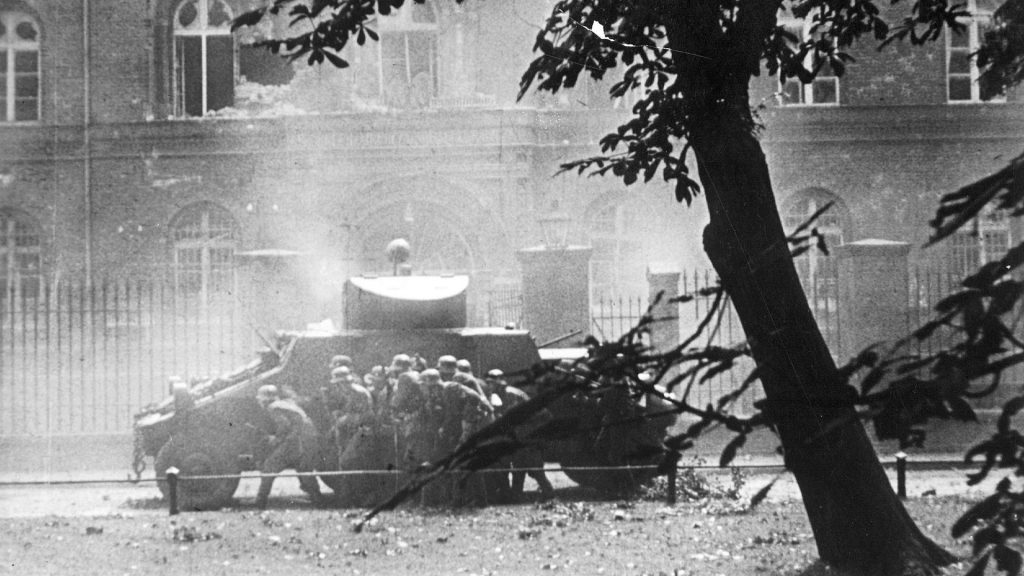
After World War I, Danzig was named a “Free City” and was put under the protection of the League of Nations in the Treaty of Versailles, stripping it from German control. With its strategic port on the Baltic Sea, its location separating East Prussia from the rest of Germany, and its ethnically German population, Danzig was a strategic target for Hitler, and by 1939, the Nazis had tightened their grip on the city. The Polish post office served as a headquarters of sorts for the Polish state, which had been granted rights around trade and access to the port.
On September 1, 1939, the Germans cut the building’s electricity and phone lines shortly before the battleship SMS Schleswig-Holstein open fired on the Polish garrison on the city’s peninsula, Westerplatte. The Danzig Police and the SS began their attack on the fortified Danzig post office complex, which only 56 people were on hand to defend (including post office employees and the caretaker’s family). The Polish fighters managed to repel the first and second attacks, and when the Poles retreated to the building’s basement and refused the Germans’ demand that they surrender, the Germans pumped gasoline into the basement and set it on fire. After 14 hours of fighting, having taken six casualties, the Poles decided to surrender, and the post office’s director emerged from the building with a white towel raised above his head. He was immediately shot dead. A small handful of people managed to escape from the building but the rest were taken prisoner and died, from either battle wounds or execution. This David and Goliath event became a symbol of Polish resistance. After the war, Danzig reverted to its historic status as a Polish city, under the traditional name Gdańsk.
- 2.
EVENT: German Invasion of Poland

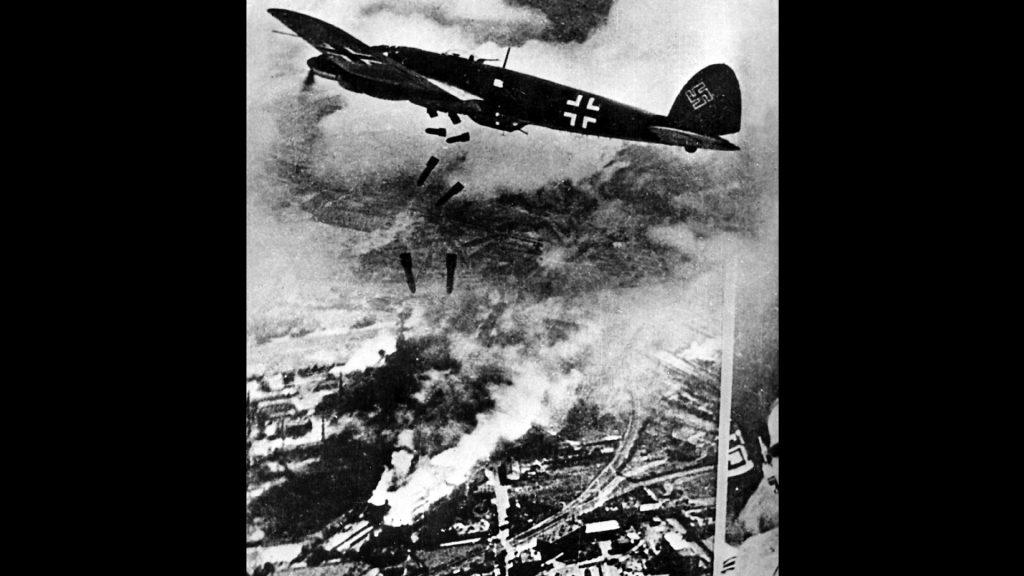
On September 1, 1939, in an attack coordinated with the Schleswig-Holstein’s attack on Westerplatte, Germany’s air force, Luftwaffe, sent 1,000 planes over the border, bombing Warsaw and Polish towns, villages, roads, and rail junctions, while two thousand tanks invaded Poland from the north and the south, allowing German infantry to pour into the country and advance through Polish lines. Thus began the invasion of Poland that marked the beginning of World War II.
Numerous circumstances leading up to the war allowed for this surprise invasion, such as Hitler’s 1934 nonaggression pact with Poland, which supposedly proved his peaceful intentions. But primary among the circumstances was the policy of appeasement followed by British prime minister Neville Chamberlain (and to a lesser degree, France), which acquiesced to Germany’s rearmament and its annexation of Austria and endorsed the Munich Agreement, giving Germany part of Czechoslovakia—all in the name of avoiding all-out war. Finally, one week before the September 1 invasion, Hitler negotiated the Nazi-Soviet Pact, which secretly divided Poland between the two powers and guaranteed that the Soviets wouldn’t retaliate upon a German invasion of Poland.
Germany continued its attacks throughout September, and the Soviets began their invasion of eastern Poland on September 17. Warsaw held out over 18 days of continuous bombardment until its surrender on September 28. One week later, the Germans and Soviets occupied all of Poland.
- 3.
EVENT: Britain Declares War

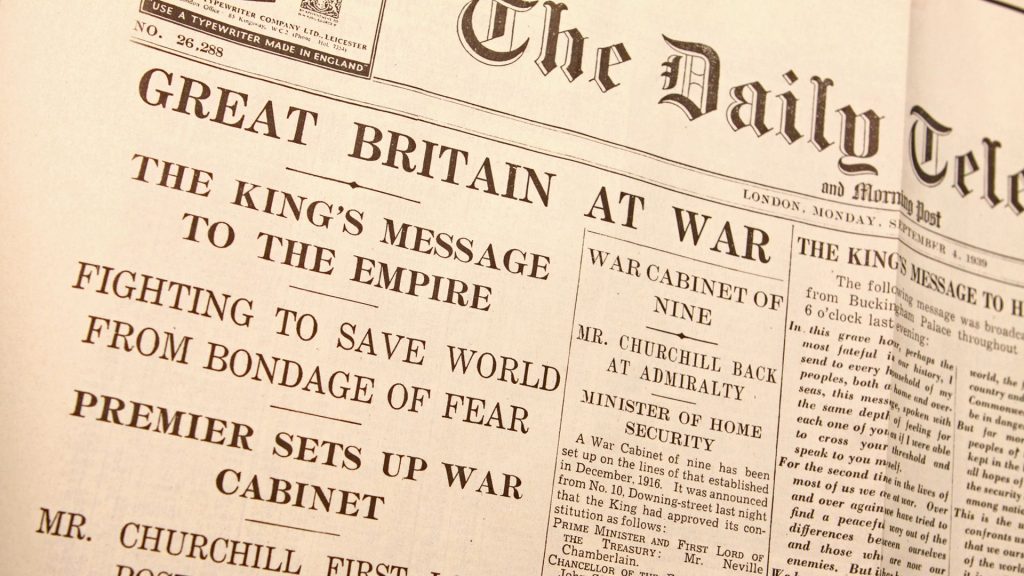
In the leadup to the war, as Hitler violated one after another of the agreements he’d made in the wake of the Treaty of Versailles, Britain and France stood by, hoping to avoid all-out war, meanwhile stepping up their rearmament programs to prepare for that eventuality. When Hitler violated the Munich Agreement in March of 1939, occupying Czechoslovakia’s remaining territory, the two allied nations began joint military planning. In April, Britain introduced peacetime conscription, and together with France agreed to defend Poland, Hitler’s likely next target, from German invasion. In the summer of 1939, talks among Britain, France, and the Soviet Union took place but ultimately fell apart—the Soviets were also, it was later revealed, in talks with Germany. When a Nazi-Soviet pact was signed on August 23, Britain and France entered a formal military alliance. The policy of appeasement ended when Britain and Poland refused Hitler’s August 29 demand that they cede Danzig and begin negotiations over Poland to ensure Britain’s safety. Hitler invaded Poland on September 1 and two days later, on September 3, 1939, Britain demanded that Hitler withdraw troops from Poland, but the ultimatum was met with silence, as was France’s. Britain and France declared war on Germany. At 11:15am, prime minister Neville Chamberlain announced in a radio broadcast that the country was at war.
Hear Neville Chamberlain’s announcement to the British people.
- 4.
PEOPLE: Oswald Mosley and the Blackshirts

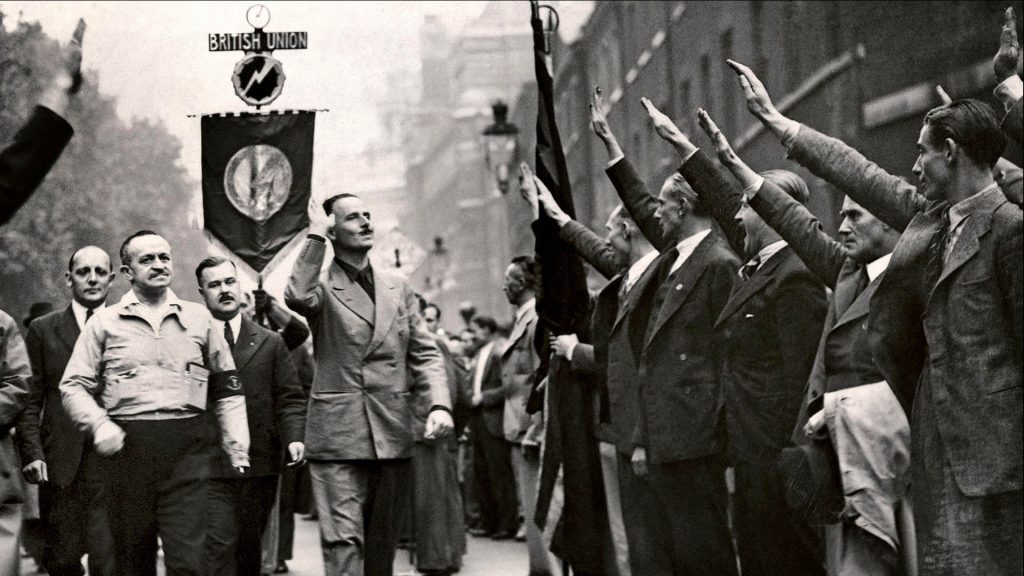
Sir Oswald Mosley was the founder and leader of the British Union of Fascists, a violent, anti-Semitic, nationalistic, pro-authoritarian group whose popularity grew in the 1930s as he held mass rallies and marches in the style of those designed by Nazi propaganda minister Joseph Goebbels. He admired and courted Mussolini and made Hitler, a friend of his second wife, Diana Mitford, guest of honor at their wedding. Blackshirts, the paramilitary thugs among his supporters (so called because of their uniform’s all-black, long-sleeved, turtleneck shirts), held anti-Semitic rallies and marches which often involved violence, increasingly leading to a decline in the BUF’s membership and popularity. The British government disbanded the BUF after the outbreak of World War II.
Mosley’s rise was aided by his noted charisma and good looks, and his personal life was one of wealth, womanizing, glamour, and scandal. His downfall was less spectacular; he was interned during the war, and in its aftermath, his multiple attempts to gain election failed, and he left the UK for France.
Watch footage of Oswald Mosley and the British Union of Facists marching and rallying in Manchester, England in the 1930s in a video from the United States Holocaust Museum.
- 5.
PEOPLE: Women Journalists of WWII

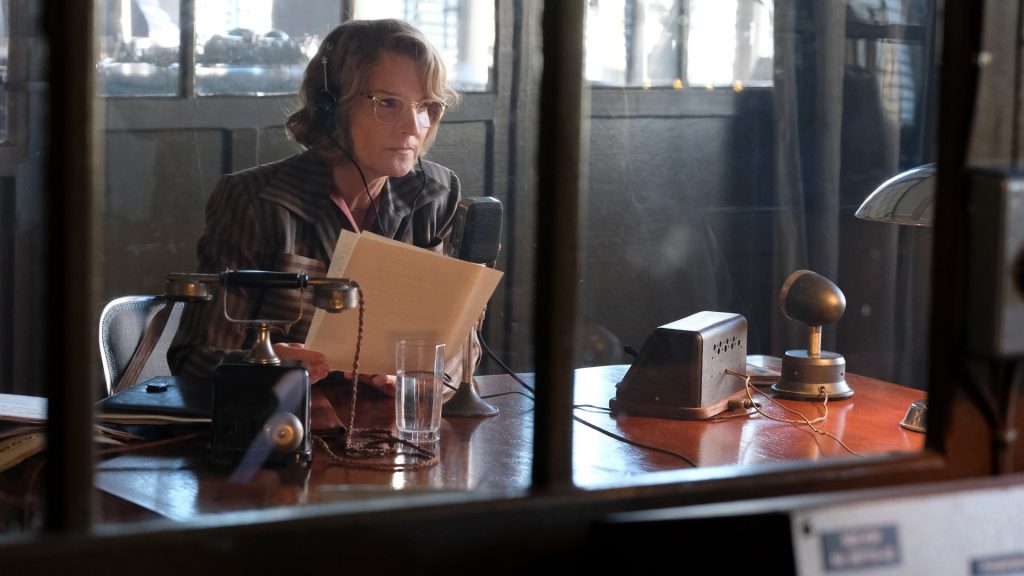
Before World War II, British and American women reporters weren’t allowed to cover wars, only domestic, or “soft,” stories. But after fighting for access, many female journalists were eventually accredited to report from the front lines of WWII. Among them was the British reporter who landed what became known as the “scoop of the century,” Clare Hollingworth. Like World on Fire‘s Nancy Campbell, Hollingworth was based in eastern Europe, and was driving along the Polish-German border in a borrowed car when she noticed a large burlap screen hiding a valley below. When the wind blew it aside, she discovered a mass of German tanks lined up to invade Poland. She broke the story to readers…and to her own government. Other groundbreaking female war correspondents of the period include wire service reporter Ruth Cowan, who reported on North Africa, the invasion of Normandy, the liberation of Paris, and the Battle of the Bulge; reporter Martha Gellhorn, who reported from every theater of World War II and who covered the D-Day invasion after smuggling herself into a hospital ship to get to Normandy; and photojournalist Dickey Chappelle, America’s first female war reporter killed in action.
Hear Clare Hollingworth describe her shocking discovery (around 13:10) in a recording from the Imperial War Museum.
- 6.
PEOPLE: Conscientious Objectors

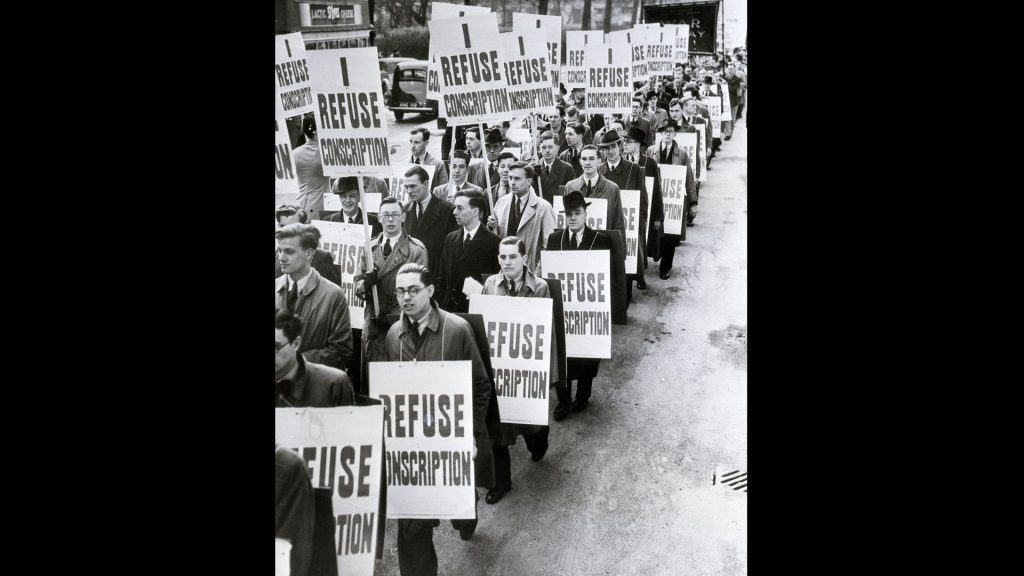
When military service became compulsory in the UK for World War I, certain exceptions were made, including “conscientious objection.” Four main reasons were responsible for objection: faith-based opposition to killing; leftist perception of WWI as a class-oppressing, imperialist war; humanist belief in the sanctity of life; and the belief that the war shouldn’t be the UK’s war. Only the first was considered a legitimate excuse from active combat by the British government.
In the run-up to and during World War II, patriotism and a desire to serve the war effort dominated British politics and culture, and COs were often met with disdain and hostility. Yet many COs performed critical work during the war, serving the war effort in the Non-Combatant Corps as ambulance drivers, medics (including parachute field ambulance duties), specialists in bomb disposal, and in army stores, transport, agriculture, forestry, and as air raid wardens at home. The personal convictions of some COs changed in the face of Nazi actions and the fall of France, and they renounced their CO status to fight in the war.
Peace News, which Douglas Bennett hands out on the streets of Manchester, was a real magazine advocating for pacifism during the time period of World on Fire, and still exists today.








